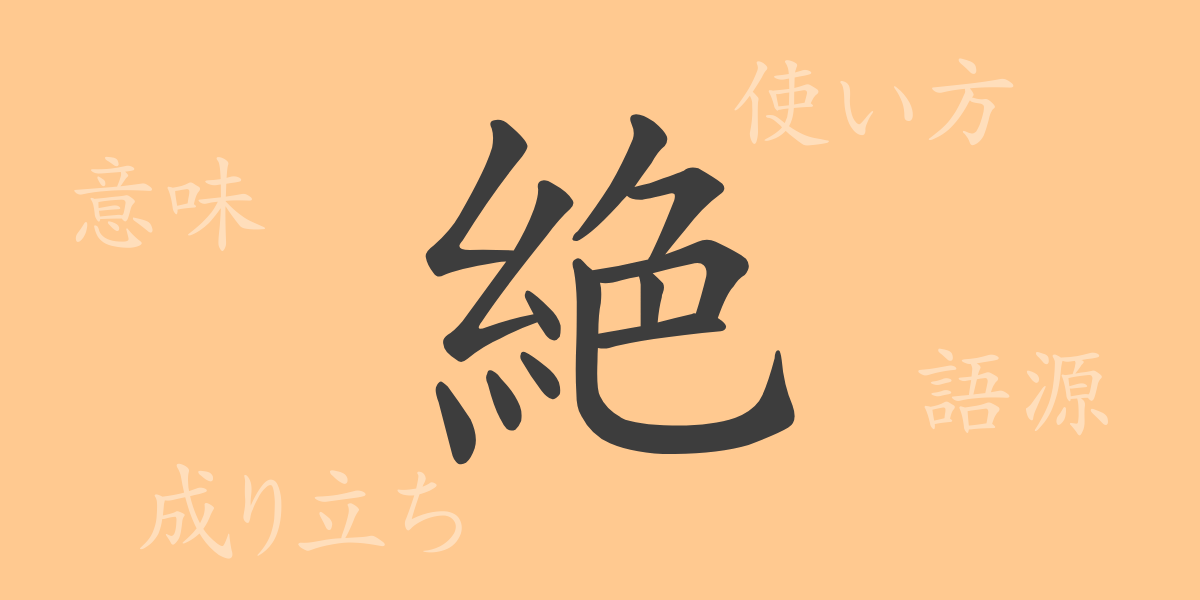The richness of Japanese expression often hinges on the profound meanings and emotions conveyed by a single kanji. Among these, the kanji “絶” (ゼツ) is frequently used across a spectrum from literature to everyday conversation, embodying extremes of emotion and situations. This article delves into the origins, meanings, applications, and the significant role of “絶” within Japanese culture.
Origins of 絶 (ゼツ)
The kanji “絶” originated in ancient China, initially represented by the simplified character “絕” which meant to sever or cut off. It comprises the radical “糸” (いとへん) indicating ‘thread’ and “色” suggesting the action of cutting, symbolizing the severing of a thread and by extension, representing absolute separation or limits.
Meaning and Usage of 絶
“絶” primarily means ‘to sever’, ‘to discontinue’, or ‘to break off’, referring to the complete cessation of something. It is also used in terms like “絶対” (ぜったい), denoting something unequivocal or absolute without room for comparison or compromise. Additionally, it appears in expressions like “絶景” (ぜっけい), describing something breathtakingly unparalleled.
Readings, Stroke Count, and Radical of 絶
“絶” is a versatile kanji used across various contexts in Japanese, each requiring different readings.
- Readings: On’yomi (ゼツ), Kun’yomi (た(える), た(やす), た(つ))
- Stroke Count: 12 strokes in total.
- Radical: 糸部 (いとへん) – associated with thread or string.
Idioms, Phrases, and Proverbs Using 絶
There are numerous idioms and phrases incorporating “絶”, each enriching Japanese expression. Examples include:
- 絶望 (ぜつぼう) – complete loss of hope
- 絶好調 (ぜっこうちょう) – in perfect condition
- 絶対 (ぜったい) – absolutely, unconditionally
- 絶滅危惧 (ぜつめつきぐ) – endangered, on the verge of extinction
- 絶交 (ぜっこう) – to sever ties permanently
These phrases are used to convey strong emotions or firm decisions within the Japanese language.
Conclusion on 絶
The kanji “絶”, with its imagery of severing yet also symbolizing absolute beauty and finality, is a multifaceted character. It plays a crucial role in articulating the depth and richness of Japanese culture and emotional expression. Understanding the nuanced meanings embedded in “絶” can enhance appreciation of the complexities of Japanese expression.

























